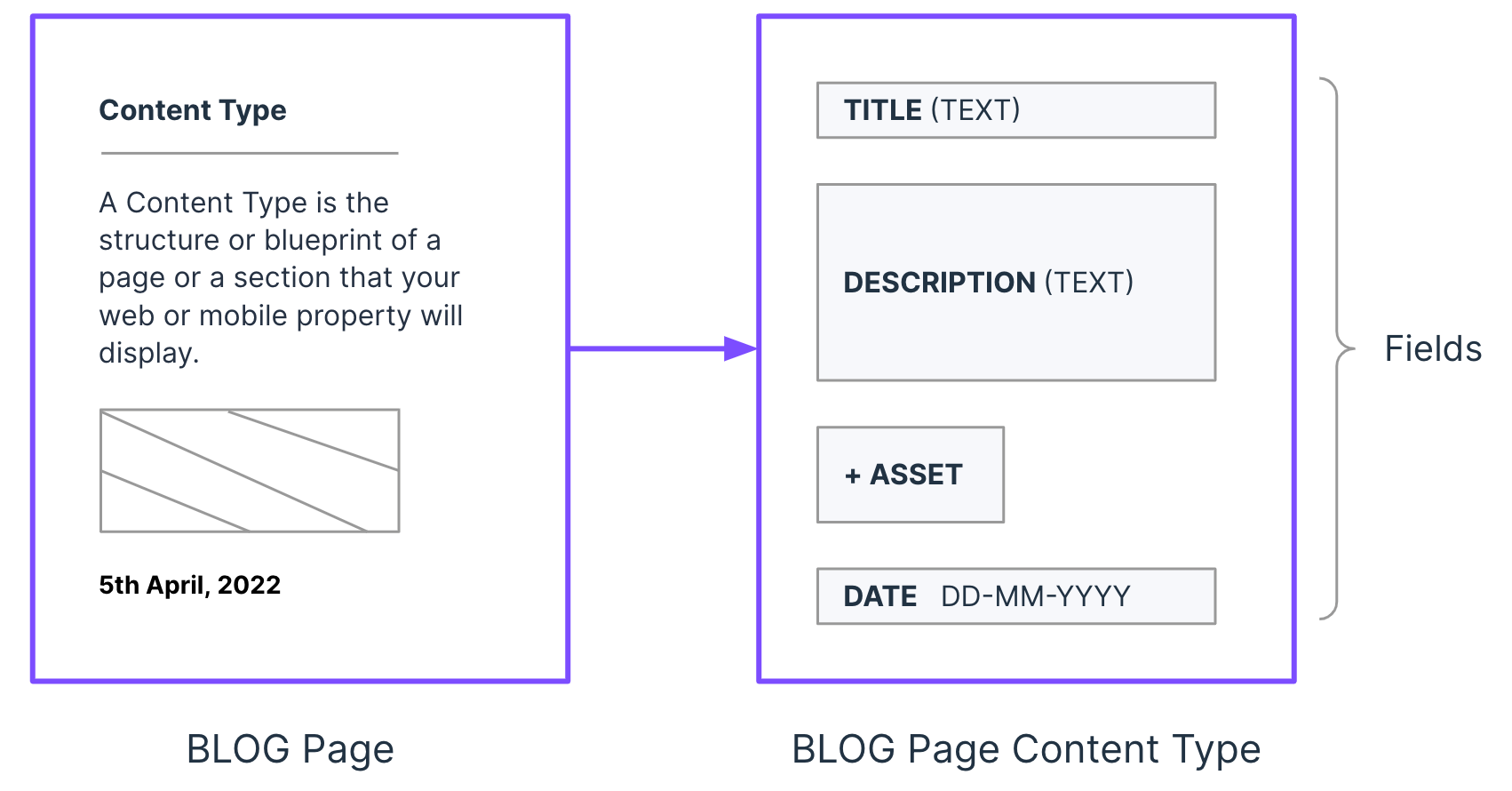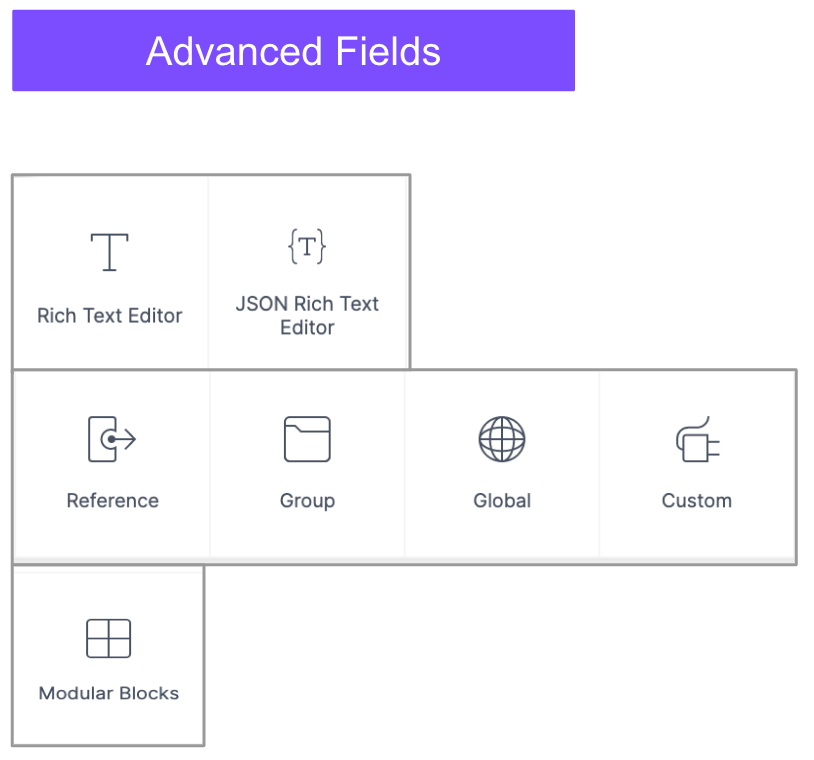Contentstack End User Training (EUT)
Fields
Fields are the building blocks for structured content. The type and order of the fields you add to a content type decide how the content will be presented. All the content you will add to create an entry goes into the fields.
Each field possesses specific properties, such as:
Display Name
Unique ID
Default Value
Help Text
Mandatory
and so on. These properties are editable and provide flexibility to customize the nature of the field.
Video: Content Type Fields Example; Blog Entry
In this video, we look at the different fields used by the "Blog Entry" example Content Type.
Understanding with an example
Let's understand this using the below diagram:

Consider a 'Blog page' which consists of a 'Title,' 'Description,' 'Image,' and 'Published Date.' Its respective content type will contain fields like 'Title = text field,' 'Description = multiple line text field,' 'Image = Asset field,' and 'Published Date = Date field.'
In Contentstack, the 'Title' field is a default text field that is mandatory and unique whenever you create a content type. It accepts single-line text and provides no formatting options or line breaks. The entry's title is the value entered in this field while making an entry.

Contentstack classifies Fields into two types:
Simple Fields
Advanced Fields


We will look at the above fields in detail in the upcoming episodes.
Quick Tips:While you can add a maximum of 100 fields to a content type by default, having large number of fields can increase complexity and impact authoring experience.
